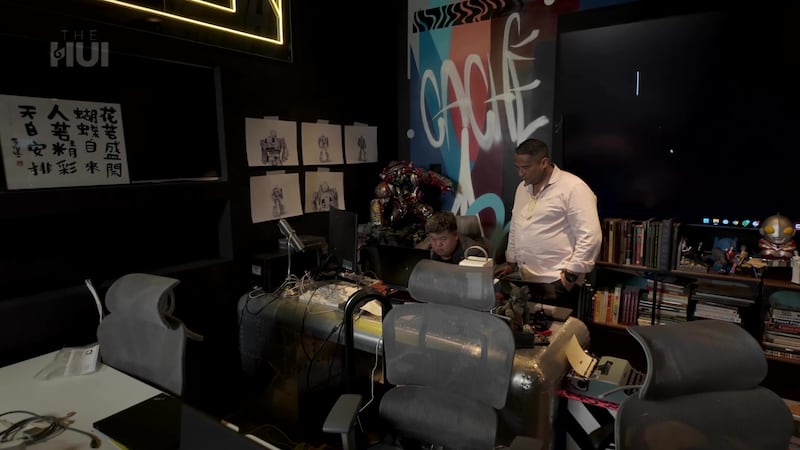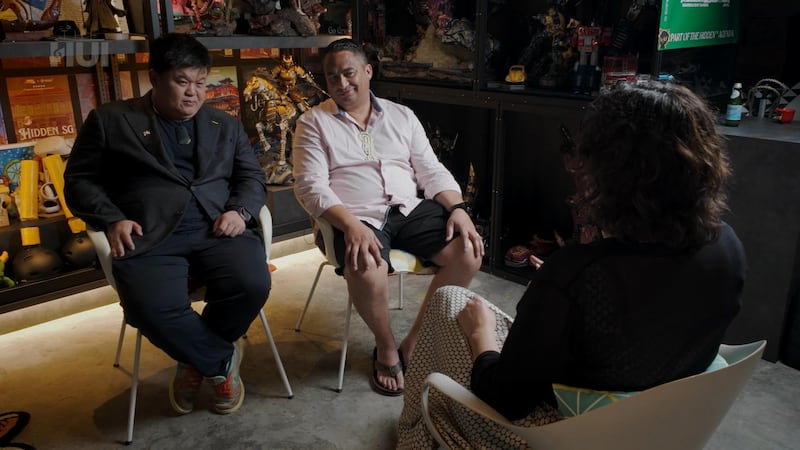Ko Bukit Timah te maunga.
Ko Kallang te awa.
Nō Singapore ahau.
Ko Lim tōku whānau.
Ko Yee-Hung tōku ingoa.
This is the pepeha of Singapore game-maker Yee-Hung Lim.
When he first connected with the Māori culture, it led him on his own identity journey.
“To me, there’s almost this dimension of reality that I think most Singaporeans are not aware of.
“What I learned from this is, I was missing so much. All the layers of the whakapapa, I was just... Where’s mine?”
Yee-Hung is co-founder of Hidden, a game-making company where users are taken on immersive experiences around Singapore, exploring the history of the place by solving clues and puzzles they receive via WhatsApp.
But it was connecting with Dannervirke-based iwi, Ngāti Kahungunu ki Tāmaki Nui a Rua, that shifted not only his perspective, but changed how he made his immersive games.
“Our game was very much factual. You come here, you solve a puzzle, here’s the facts. And since then, and learning from the tribe, we’ve learned that there’s a third dimension, which is the story. The story of the place.”

Ngāti Kahungunu ki Tāmaki Nui a Rua chair, Hayden Hape, originally had an idea for a VR experience relating to Te Āpiti wind farm, where atua would step off the wind turbines, and users would be transported to the origin story of each atua.
After Covid meant funding had to be shifted elsewhere, Hape saw an opportunity with Hidden.
“They showed us some footage of young students running around excited, playing this game of solving clues and learning their own history here. And, we love that stuff at home, we love telling stories and connecting people to our history.
“So this technology is something that would be cool at home, and it’d be great to invest in to be part of a company that has the ability to go global.”
When they first started collaborating, Hape taught the Singapore Hidden team about the Māori way of identifying oneself.
“With Singapore being a hub of tech throughout the world. I did a bit of an introduction to the staff, and what I did was I showed them a pepeha on Google Earth.
“And they were like blown away. So, using the tech, to show our Team from Hidden how intelligent our old people are, were, and still are today.”
For Lim, he said, “It was like science.
“To me, it’s the earliest form of GPS. Because GPS works by triangulation, right? You need three points, and then you know exactly where the person is. And when you think about it, the maunga, the awa, the marae, that’s the three points. And then from there, you geolocate the person to a place. I thought that was genius.”

When Lim came to Aotearoa for the first time to meet with Hayden, the pepeha GPS came to life.
Hayden hosted him at Awakura, a 660-hectare native forestry block the iwi had returned to them for their Treaty settlement.
“Honestly, it’s life-changing, because I’ve done business around the world right, I’ve gone to the UK as well. I’ve met the Irish, and you meet them in the hotel room or in a hotel lobby.
“This guy brought me into Awakura, and we just went up there, we got the jeeps out.. And then meeting the tuna, and then the jeep going past the water. You don’t get that in Singapore. Singapore, everything’s sort of sanitised, you know? All of the waterfalls are very nice. But all you can do is look at it. You can’t touch it. You can go near it. But there, it was real. It was like, touch the tuna, you can touch the tree… It was a magical movie.”
However, Hape said they’ve also found some commonalities in the two cultures and how they do business.
“I think that in the Asian world, too, business comes second. You know, kai and manaakitanga comes first, so it was really just to embrace him and teach him about who we are before talking business.”
Ngāti Kahungunu ki Tāmaki Nui a Rua has invested $1m in Hidden Singapore, and Hape says technology is the future of iwi investments.
A Hidden / Monopoly game will be launched next month in Singapore. And in Aotearoa, visitors to Tūhura Otago Museum can do a Hidden experience there.
By Meriana Johnsen of The Hui


